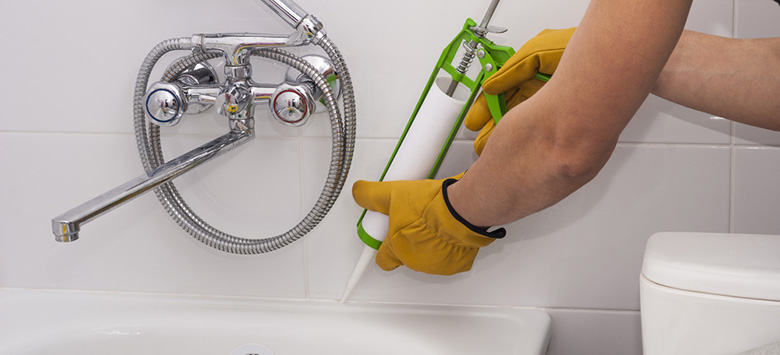
Moisture and mould mainly in bathrooms and laundry rooms. Silicone, acrylic and latex are types of caulk that you can use to seal joints to prevent leakages. For the caulk to be effective, it needs to cure. Curing is a process that makes the caulk waterproof, and that’s what stops water from leaking behind your bathroom counters or outside of the bathing area.
What’s the difference between dry and cured caulk?
People use the terms dry and cure mutually. However, there is a difference between the two processes.
Drying is the primary process in which water and moisture evaporate from the caulk, leaving the silicone’s surface dry to touch within a couple of hours.
Curing is a more complex and slow process that occurs after installing the silicon and its exposure to oxygen. Caulk must be completely cured before exposed to moisture.
How long does silicone take to dry?
Most types of caulk need approximately 24 hours to cure completely. After the curing process is completed, they can be exposed to water and moisture. Caulks have an expiration date. If the silicone is out of date, it may never cure properly.
Depending on the silicone type
Not all types of silicone caulk are created equal. Some types cure faster than others because of the formula and the type of the caulk. Specialized silicone, such as caulk created to withstand high temperatures, have a more complex chemical formula and need a longer curing time.
Some silicones are mixed with acrylic or latex, which can also prolong the curing time. Always check the manufacturer’s instructions and follow the written process to avoid damaging the caulk.
Fast-drying silicons still have a long curing time, but they dry faster, which means you need to wait a shorter time before able to use your bathroom.
Depending on the humidity levels
The curing requires interaction between moisture in the air and the caulk, so more humid air shortens the curing process. If you’re caulking during the winter, make sure to turn off your heater or keep the bathroom door closed to keep the heat out. In a dry climate, you might need to wait 48 hours before being able to use the shower.
Depending on the temperature
Warmer temperature helps to speed the curing process. The warm climate tends to be more naturally humid except for the desert areas. Avoid using direct heat on the caulk to speed up the curing process.
How long you should wait before showering after caulking your bathroom
It’s not recommended to expose the silicone to moisture before the caulk cures completely to ensure the caulk is completely waterproof. However, if you can’t wait 24 hours, you should at least wait 12 hours. You can apply the caulk in the evening and wait overnight. This will ensure that the surface of the silicone is completely dry, and the water can’t be completely absorbed. Do this at your own risk.
Can you dry silicone with a hair dryer?
It’s not recommended to expose the silicone to moisture before the caulk cures completely to ensure the caulk is completely waterproof. However, if you can’t wait 24 hours, you should at least wait 12 hours. You can apply the caulk in the evening and wait overnight. This will ensure that the surface of the silicone is completely dry, and the water can’t be completely absorbed. Do this at your own risk.
Using a hairdryer to speed up the drying process is not recommended.
Silicon dries comparatively fast, but caulk needs to cure properly. Heat softens the caulk and can disrupt its adhesion. Caulk naturally needs moisture in the air to cure completely. Using heat will only damage the curing process, which will lead to replacement and more lost time waiting for the process to be completed.
Does wet silicone stick to dry silicone?
New silicone will be capable of sticking to the old silicone because it’s dry material. However, the bond won’t be as strong as if it’s applied to a clean, dry surface. It’s highly recommended to remove the old caulk and clean the area before applying the new layer.
Can you paint over silicone?
Pure, 100% silicone can’t be painted over. Some silicones mixed are with acrylic. Read carefully the package of the caulk, if it can be painted over it.
If you choose a paintable caulk, you still need to wait for the caulk to cure thoroughly before proceeding with the painting procedure.
Consult with a professional!
We can help with all of your caulking and silicone problems!


